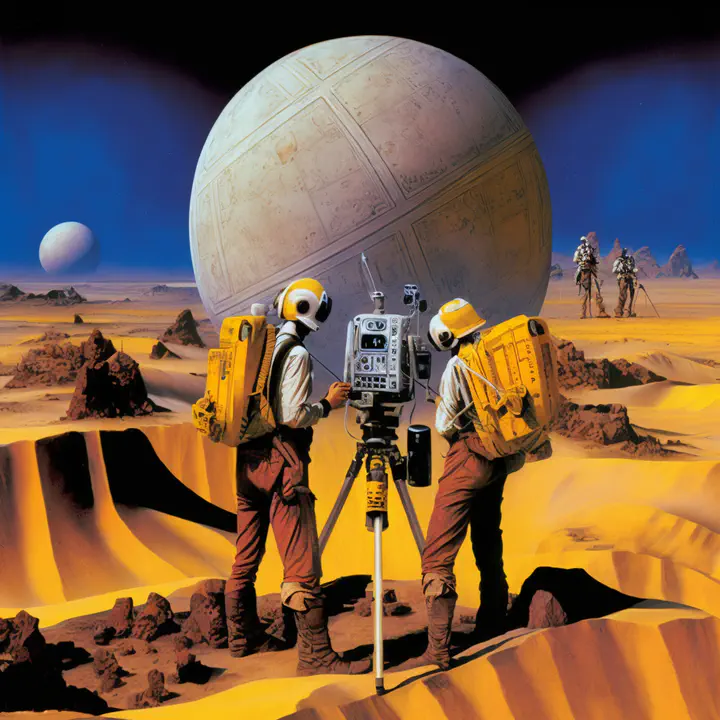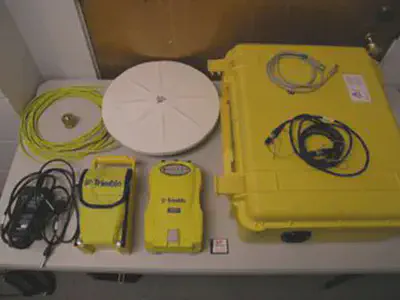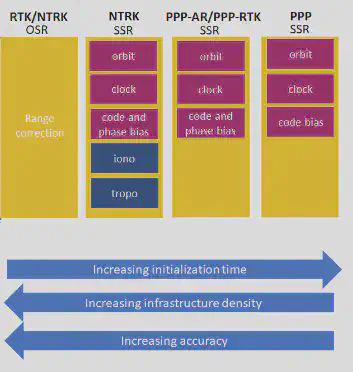Return of the RTK
 Midjourney : (Content: a group of surveyors using Trimble 5700 geodetic receivers on a planet in the Star Wars universe) (Medium: digital illustration) (Style: epic and cinematic, with a hint of adventure and sci-fi in the Star Wars universe) (Lighting: dramatic and dynamic, emphasizing the sense of danger and excitement) (Colors: a vibrant and colorful palette with occasional pops of blue and green)
Midjourney : (Content: a group of surveyors using Trimble 5700 geodetic receivers on a planet in the Star Wars universe) (Medium: digital illustration) (Style: epic and cinematic, with a hint of adventure and sci-fi in the Star Wars universe) (Lighting: dramatic and dynamic, emphasizing the sense of danger and excitement) (Colors: a vibrant and colorful palette with occasional pops of blue and green)The future of RTK had always intrigued me, especially as I was trained with the yellow kit and flat white frisbee. Then, I went on to study an area of research that promised to make RTK irrelevant, called PPP. Given my foundation began in a world of RTK but mastered the art of GNSS measurement processing with PPP, it begun to feel like RTK was no longer relevant and I would wonder if its place was next to the rotary phone in the musem.

From an academic perspective, it should have meant the death of RTK, as PPP promised a significant reduction in operational cost to both the service provider and client, while maintaining the accuracy requirements needed for a variety of different use cases. Signs of this can be observed from the GNSS market perspective. There has been shifts in the communication style of larger organizations, as it’s been transitioning away from RTK and towards PPP. Such as Hexagon’s clever marketing called, “RTK From the Sky” and Trimble’s RTX service. Whereas smaller organizations have been focusing on RTK, or more so NRTK, such as Quectel, u-blox, and unicorecomm. What’s interesting is u-blox’s recent acquisition of SAPCORDA. Is u-blox predicting the future trend of chip manufacturers with their PPP service, Point Perfect? If yes, there is even more market movement towards the world of PPP.
With every journey, it’s always important to take a step back and reflect on the fundamental differences between RTK and PPP. What we can observe is, as we transition from RTK to PPP, we see an increase in initialization time and decreasing accuracy but reduction in infrastructure density. Yes, PPP reduces the requirement for infrastructure density and optimized bandwidth utility, but the biggest underlying problem is such optimization of cost hasn’t been seen by the client. The cost of NRTK and PPP services have remained comparable.

While it’s unclear how manufacturers have implemented their underlying algorithm, it’s possible to have one navigation engine that facilitates the interoperability of PPP and RTK processing modes. From the algorithm and implementation perspective, differences primarily exist in the correction module and stochastic constraints of the atmospheric state terms. Both industry and academia have treated these acronyms, “RTK” and “PPP”, as very different positioning techniques. Their motivations have been apparent. Academia needed to emphasize novelty to ensure a high grant success rate, and the industry needed to divide market segments to optimize financial gains. Such an approach has kept the limelight on NRTK and PPP, while keeping RTK on the sidelines.
RTK being excluded

This leads me to the focus of today’s blog. Today, we’re observing intriguing market movements with the emergence of organizations such as onocoy and Geodnet. These companies is leading the way to materializes a world saturated with reference stations. Such a concept is truly fascinating, as we’re entering a world that goes against all that I was taught during grad school. Is it possible? Is it practical?! Yes, and yes. web3 technology is an enabler of such technology. It’s mind-blowing and humbling at the same time. The power of community, togetherness and unity. Yes, the power of community has always existed, but web3 technology is a more transparent tool that is enabling such a revolution of GNSS technology.
As with every movement, we must have an acronym, #DePIN, representing, “De-centralized Physical Infrastructure” which represents the utilization blockchain networks that use tokens to incentivize communities to build physical infrastructure networks. The integration of web3 and infrastructure networks is a clear example of disruptive technology, as it’s fundamentally changing the way things are done, creating a new market while disrupting an existing market. While onocoy and Geodnet have fundamental differences (topic for a future blog post), they synergize GNSS technology with web3 technology to enable a truly densified world of GNSS reference stations. They are disrupting the traditional GNSS market by having a improved value proposition especially in regards to cost, quality and accuracy. Also, enabling adoption by non-traditional customers especially within the consumer electronics. There will be an emergence, especially by hobbyists and enthusiasts, why not monitor yourself ski down the slopes utilizing RTK technology or use it to track footballers on the field. Would our kids grow up with remote control toys with RTK chips integrated? Most will say that’s ridiculous but question and challenging the status quo is what breeds innovation and creativity. What we will begin to see are new entrants which have different business models, cost structures, and value propositions, especially within the climate monitoring sector.
RTK has its place in today’s world, especially in consumer electronics, because it will always be more computationally efficient (requiring less power) as it requires less state terms and pre-processing of correction data. “Return of the RTK” will also be a disruption of cost, since there’s no need for expensive data centers for correction generation (requirement for NRTK and PPP), in addition, organizations such as onocoy have opted to be non-profit, which will ensure optimization in operations that would be passed onto the clients. What we’re witnessing is a ripple effect through time, where companies such as onocoy and Geodnet has thrown a pebble in the sea of time, and as it ripples forward we’re going to witness the birth of innovative GNSS applications where RTK technology is the enabler.
To end this blog post, let’s rephrase my original question: In a dense reference station network, are NRTK and PPP still relevant ? The obvious answer is “no”, as efficient access to a reliable reference station makes NRTK unneeded. But, on the other hand, PPP still has a reassured home in the marine sector, as RTK requires access to a local reference station. So, PPP can rest safely until LEO satellites become moving base stations 😉.